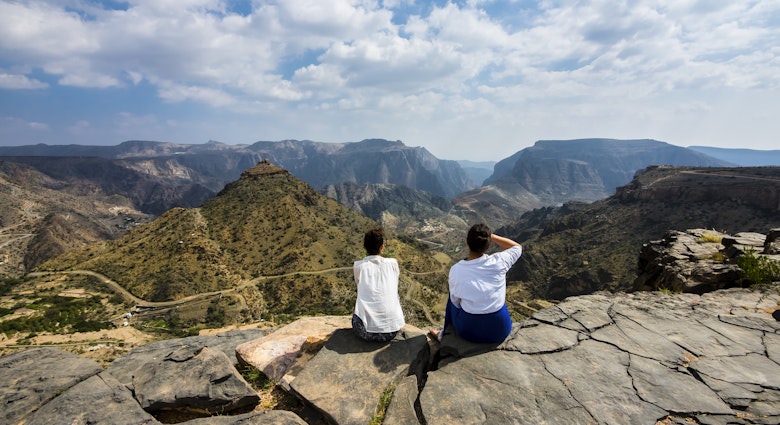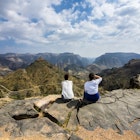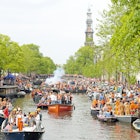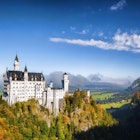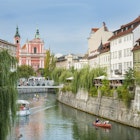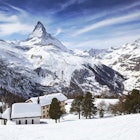Frankincense, an aromatic resin harvested from the sap of scraggly desert trees, has been treasured for thousands of years for its distinctive fragrance and medicinal properties. Because the highest quality frankincense is collected from a rare species that thrives in isolated wadis in Oman’s southernmost province of Dhofar, the region’s history is intertwined with the production and trade of these ‘desert tears’.
From ancient ports, from which frankincense-laden vessels once set sail, to a rock-strewn canyon floor where the papery-barked trees still grow, a series of Unesco-recognised attractions within 180km of Salalah help visitors trace the 5000-year history of this remarkable resin. Even if you’re short on time, visiting one or two Land of Frankincense sites offers an opportunity to gain a deeper appreciation of the significance of one of antiquity’s most sought-after luxuries.
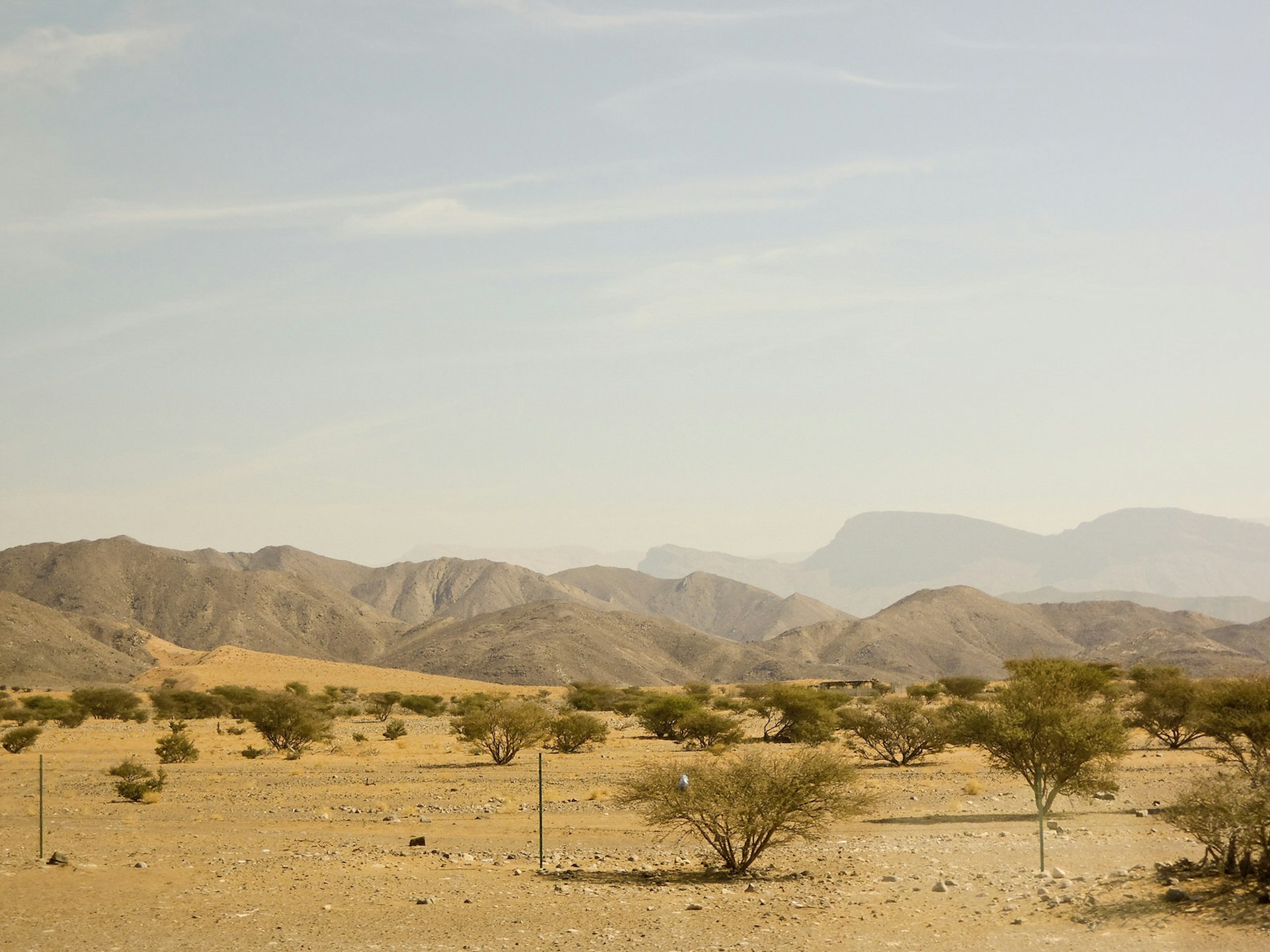
Wander through the ancient fort at Khor Rori
On the rugged coastline 40km east of Salalah, the ancient fortified city of Sumhuram overlooks Khor Rori, a lagoon where a life-giving freshwater outlet meets the sparkling Indian Ocean. As the closest harbour to the frankincense-growing region, this strategic port was a hive of activity for 800 years beginning in the 4th century BC. Today you can freely wander the atmospheric site, where smooth limestone blocks outline the monumental city gate, storage rooms, original well and a bathroom still sporting an old stone tub. Pottery, bronze coins, incense burners and other artefacts unearthed here show that Khor Rori was an important stop along the long-distance maritime trading routes that linked the Mediterranean, eastern Africa, China and other far-flung destinations. Although sailors from all over the world would dock here to trade corn, oil and cloth for Dhofar’s famous incense, there was very little crime because of a widely held superstition that the god who protected the city would prevent anyone who stole so much as one nugget of frankincense from sailing away.

View frankincense trees in Wadi Dawkah
One of the best places to see the desert tears’ source is the Wadi Dawkah Frankincense Park, 40km north of Salalah just off the Salalah-Muscat highway. There you can wander amongst hundreds of crooked Boswellia sacra trees, some of which were just recently planted on the canyon’s rocky bottom. The best incense comes from trees like these that grow in a narrow climate band that’s just beyond the summer monsoon’s reach but still under the influence of the coastal winds. As in the days of old, the work to harvest the resin in this wadi begins each April just as the temperatures begin to rise, causing the sap to flow more easily. Using special iron knives, workers remove a small piece of bark and leave the sap to ooze for a couple of weeks. After the ‘pearls’ of resin are scraped off, the same spot is re-incised and the entire process repeated several times until the final harvest, known as the kushum, yields the palest and hence most valuable resin. All told, each tree produces several kilos of incense before being allowed to rest until the following year.
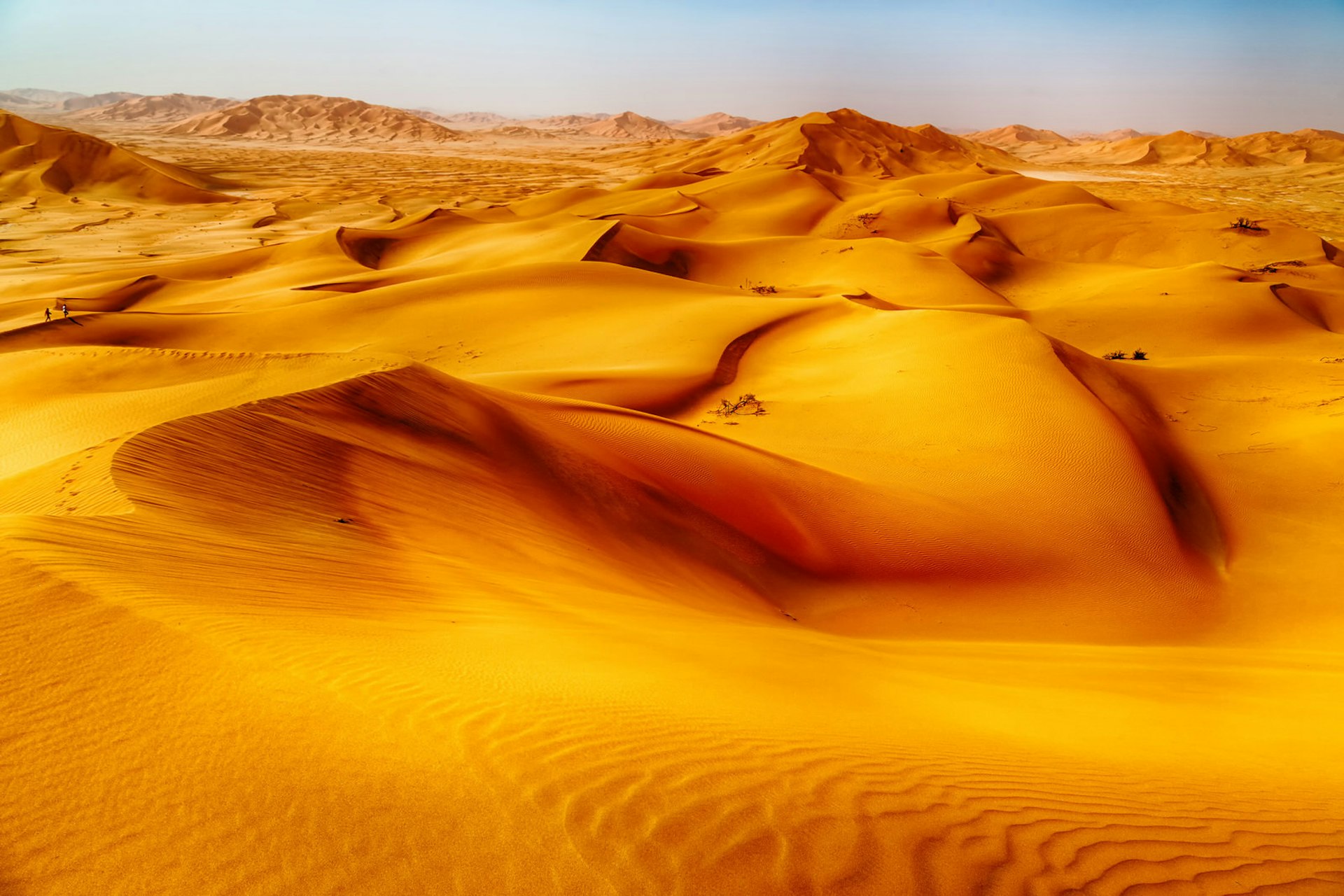
Journey to a lost city
During its heyday, frankincense was widely used in worship and in burials – in part to cover up the unpleasant scent of decaying corpses – and was also distilled into a heady perfume coveted by royalty, including King Tut of Ancient Egypt, in whose tomb its residue was found. The incense was so popular in antiquity that at times its price was as high as gold in the Roman Empire’s bustling markets. To meet this pent-up demand, frankincense was distributed via a vast overland trade network. As soon as the summer monsoon ended, southern Arabian traders would pack the resin onto their camels and transport it clear across Arabia to Gaza and other Mediterranean ports, a gruelling 2000km-long journey known as the ‘Incense Route’. One crucial rest stop in this network was Shisr, an outpost about 180km north of modern-day Salalah where the caravans would load up on water and other supplies before venturing into the world’s largest sand desert, the forbidding Empty Quarter.
Today the modest town of Shisr is a popular stopping point on Empty Quarter tours. Beyond the crumbling remains of a fortress and the verdant oasis, there’s not that much to see, but there are tantalising hints that the town may overlie the Lost City of Ubar, the ‘Atlantis of the Sands’ mentioned in the Quran. According to legend, the residents of this once-lucrative frankincense trading hub grew so affluent and corrupt that God destroyed the town to punish them. Although archaeologists continue to debate whether this dusty town is indeed Ubar, there’s no doubt that Shisr has always been (and remains) an important desert outpost.
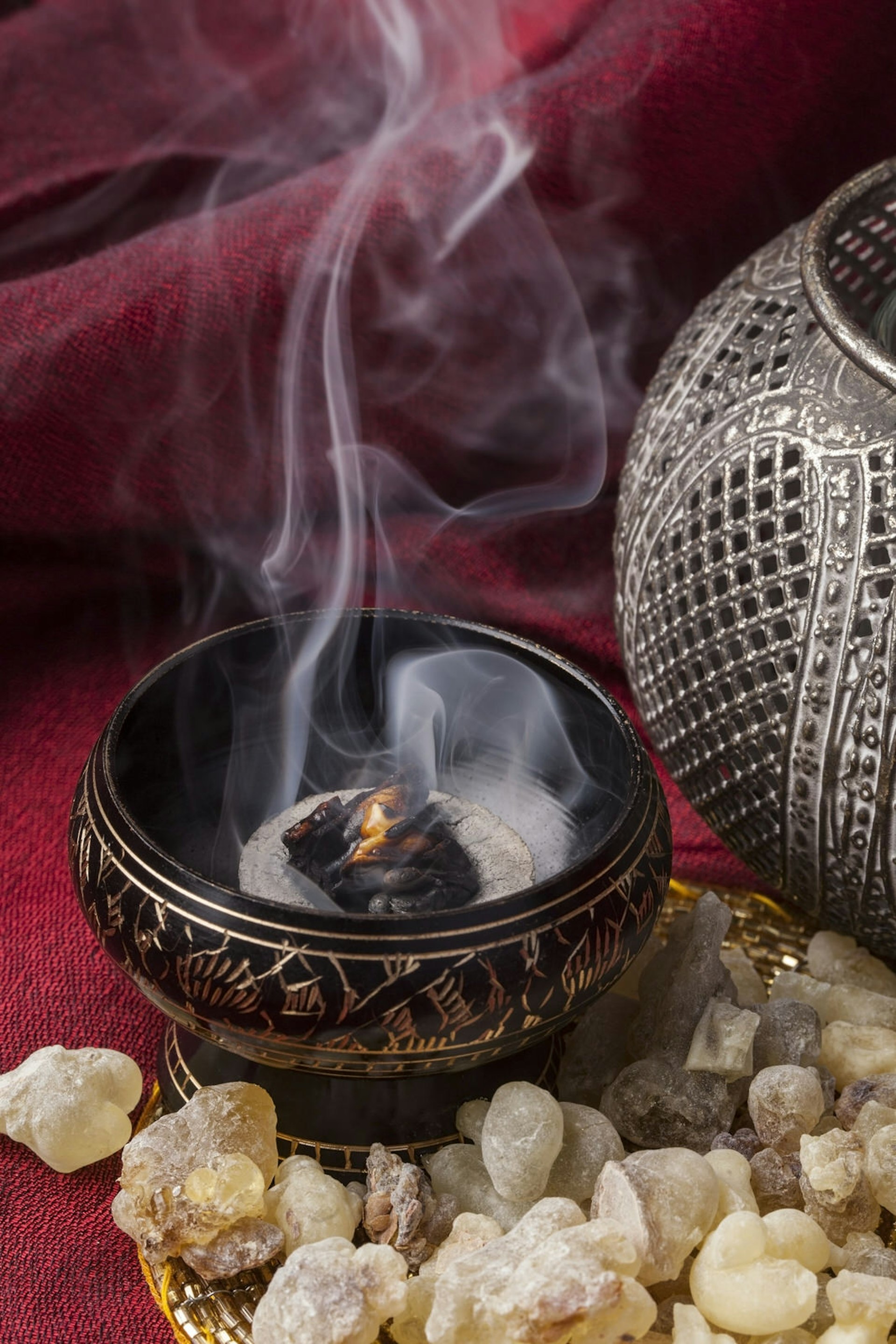
Visit the Museum of the Frankincense Land
Tucked between lush fruit plantations and the dark-blue sea on the outskirts of Salalah, the Dhofar region’s preeminent museum, the Museum of the Frankincense Land, has two halls stuffed with exhibits exploring the nation’s cultural and maritime history. One display in the Maritime Hall explains how frankincense was traditionally sourced and distributed; another explores the history of the adjacent Al Baleed archaeological site, which includes the remains of a port from which frankincense was shipped from the 8th through the 16th centuries AD following Khor Rori’s decline. The 64-hectare site, which is a stone’s throw from a dazzling white-sand beach, encompasses ancient fortification walls and the remains of the city’s Grand Mosque and citadel. Perhaps because of its prominence as a regional trading post, the town was ransacked multiple times during its lengthy history and gradually faded into obscurity after the Portuguese and other European naval powers disrupted the Arabians’ maritime trade routes.
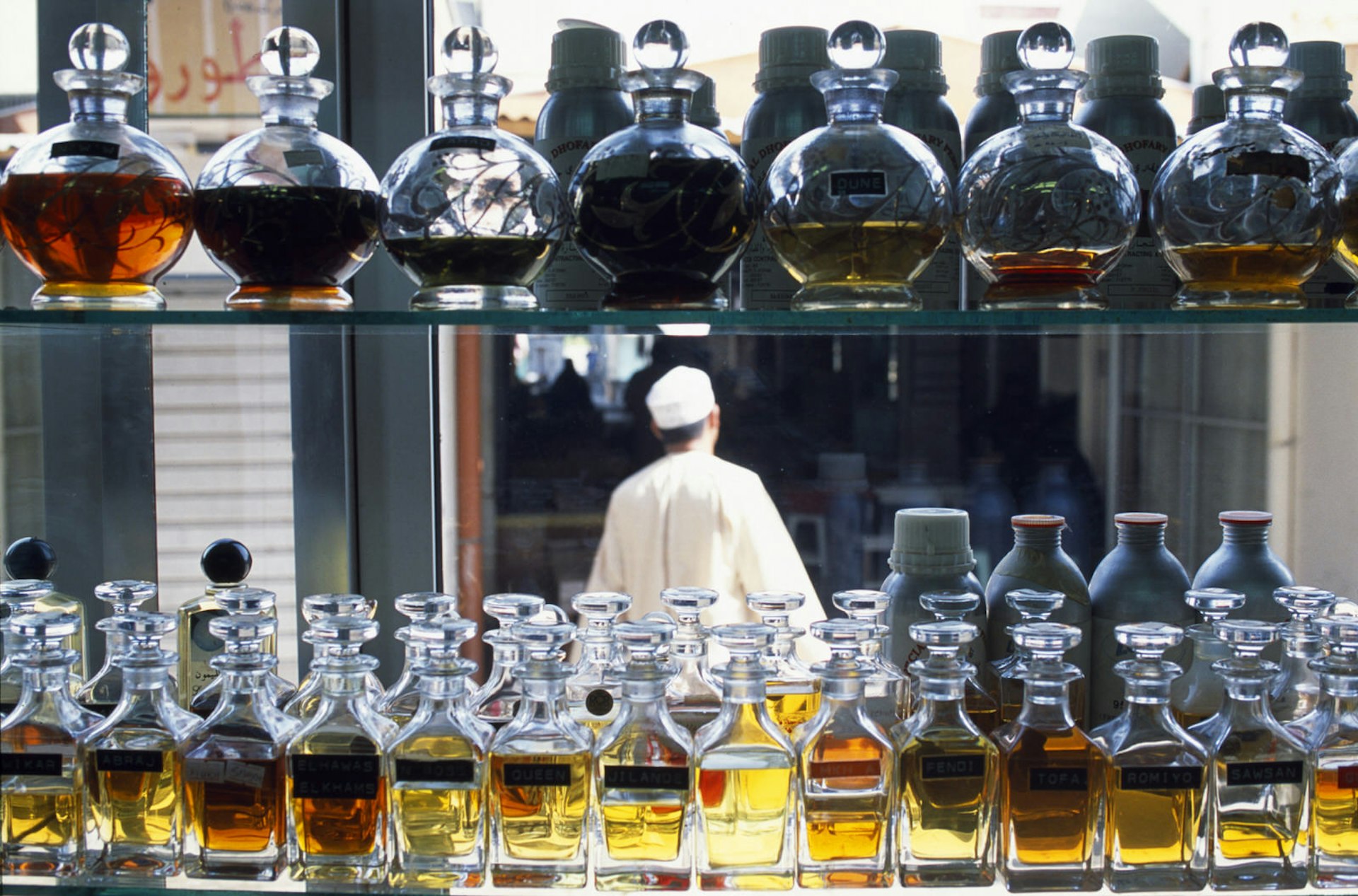
Bargain in the Salalah souq
Although it’s not Unesco-recognised, Salalah’s traditional local market is a great place to observe the continued importance of frankincense to Omanis, for whom the fragrant smoke is an important part of a warmhearted welcome. In nearly every stall, wisps of grey smoke emanate from a few pebble-sized nuggets smouldering in the bottom of a clay incense burner. As you stroll past each storefront, smiling vendors invite you inside to view the overflowing bins and heaps of bags filled with lumps of resin as well as shelves of incense-infused perfumes and lotions and edibles. Many souq shops sell compact frankincense kits, which include a small burner and a packet or two of desert tears so that you can bring the scent of Arabia, along with the indelible memories, back home with you.


